How To Bypass Reduced Engine Power? (Quick Diagnosis)
Reduced engine power engages to protect the engine from damage. To bypass reduced engine power, first use an OBD2 scanner to read error codes and identify issues like damaged engine wiring harness, loose connectors, faulty sensors (accelerator pedal, MAF, throttle position, O2), failing throttle body, bad fuel pump, or clogged air filter. Repair or replace damaged parts. If repair is not possible, bypass as a last resort by clearing codes. Operate cautiously and fix properly as soon as feasible, as bypassing reduced engine power without fixing the root cause risks serious engine damage. Only bypass if repair is absolutely not feasible.
The “reduced engine power” warning light can be frustrating for drivers. It may leave you stranded when the engine power is reduced.
This issue is common, but there are troubleshooting steps you can try yourself to get the engine back to full power.
In this guide, I will walk you through simple checks to bypass the reduced engine power mode.
- Reduced engine power is a safety mode to protect engine from damage.
- Common causes include damaged wiring, clogged air filter, bad sensors.
- Scan error codes to identify problem component, then repair/replace.
- Clean throttle body and mass airflow sensor if dirty.
- Check oil pressure, transmission fluid and catalytic converter.
My Personal Experience With Reduced Engine Power Mode
A few days back, when I was driving my car, I felt that my car had suddenly stopped picking up speed and was showing a ‘Reduced Power Mode‘ instruction on the dashboard.
I came to know that something was wrong with my engine. So, I immediately drove my car to my garage and pulled the OBD2 codes using my Scan Tool.
The scan tool pulled codes related to the throttle control system of my engine. When I dived in further, the issue was a faulty throttle position sensor (TPS) and Mass Airflow Sensor (MAF).
Thus, by replacing the throttle position sensor and mass airflow sensor and clearing error codes using a scan tool, I was able to bypass reduced engine power.
However, there are several other fixes to bypass a reduced power in your engine. That’s why I have written this definitive guide on bypassing a reduced engine power so that you could prevent your engine from further damage.
You can also read my guide on the cost to fix a reduced engine power to get an idea of how much you would need to spend to bypass reduced engine power. In that guide, I have also explained possible causes of reduced engine power.
What Does Reduced Engine Power Mean?

Reduced engine power is a ‘Loss of Engine Power’ or stopping the engine to produce more power so that the engine and its transmission can be prevented from further damage.
The reduced Engine Power mode is a safety feature deployed in vehicles so that you do not continue to run your vehicle at higher speeds or use your vehicle for towing when a fault is detected in your engine.
Reduced Power Mode is also called a ‘Limp Mode‘ which means that the vehicle’s engine power has been limited by the engine control unit (ECU) so that you bring it to your dealership or nearest mechanic as soon as possible.
The reduced engine power mode is not only limited to damage to the throttle system, emission system, or combustion system. If the ECU even detects the problem in the transmission system or vehicle’s driving safety features, such as traction control, ABS, and Stabilitrak, it will put your engine in reduced power mode to prevent any accidental damage.
A check engine light can also alert the driver about any possible damage to the engine’s components. But a reduced power mode will add further precaution by stopping the driver from speeding up the vehicle.
If your engine is running rough at idle or shaking while driving, you can read my guide on check engine light flashing and car shaking.
How To Bypass Reduced Engine Power?
You can bypass reduced engine power by performing the following tasks:
- Checking wiring harness or loose connections
- Checking mass airflow sensor
- Cleaning throttle body
- Checking throttle position sensor
- Checking accelerator pedal sensor
- Cleaning or replacing the air filter
- Replacing fuel filter
- Replacing fuel injectors
- Replacing catalytic converter
- Fixing low oil pressure
- Check transmission fluid or fix components of the transmission system
- Fixing traction control and stability system
- Checking coolant system
1. Check Engine Wiring Harness and Loose Connections

The most common reason for reduced engine power is loose connectors, damaged wiring harness, or bad ground connections.
So, to bypass reduced engine power mode, you should:
- Visually inspect the engine wiring harness and see if there is chaffed wire at some point.
- Locate all ground connections in your engine by taking help from the owner’s manual. These ground connections are linked with the negative terminal of the battery. Your engine block, chassis and transmission casing are grounded.
- Check if there is any ground strap in your engine (some engines have one). If it is damaged, replace it.
- Check harness connectors of throttle body (keep in mind that your engine may not have an electronic throttle body so it won’t have a harness connector), ECU, fuel injector, ignition coil, and engine sensors. Tug on each wire inside the connector and see if it comes out loose.
If you have GMC Chevy trucks, your scan tool might show the P1516 code when the reduced power mode is on. You can read my guide on P1516 causes and solutions to learn more.
In my guide on car won’t start after replacing battery, I have explained how to check ground connections in the engine.
2. Clean Throttle Body
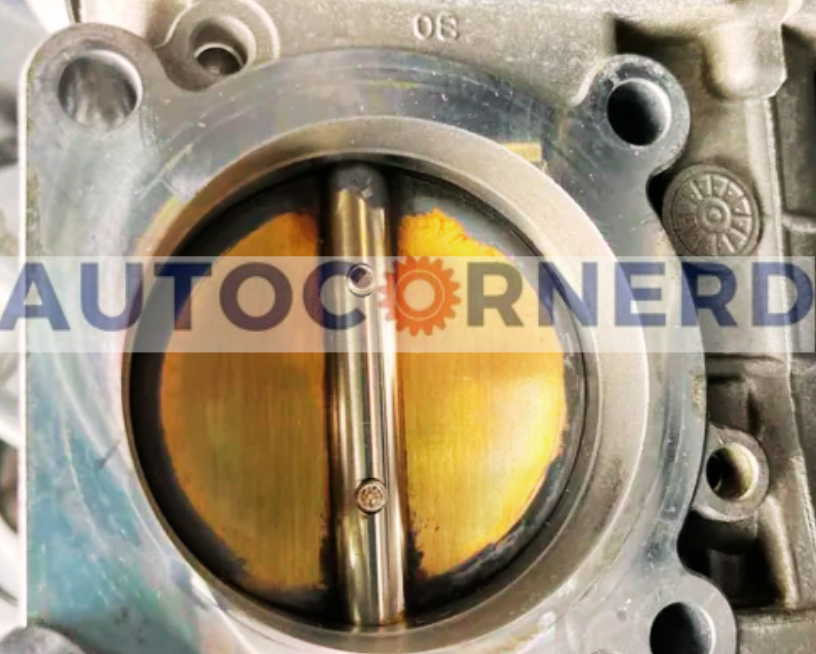
The throttle body is key for your engine’s health. This small part can cause many issues like reduced engine power if it malfunctions. Engines with electronic throttle control are especially vulnerable. A bad throttle body can cause several trouble codes like P2101, P2175, P2122, P0121, P0122, P2135 or P0222
Let’s explore what can go wrong with the throttle body and how to check for problems.
The throttle body regulates air flow into the engine. It uses a butterfly valve that opens when you press the gas pedal. The valve angle is controlled electronically by the engine computer.
What are signs of a faulty throttle body valve?
- At idle, the valve should be open 20-25%, not completely closed.
- The valve should not open more than 25% when fully pressed. It needs some spring tension.
- The valve must move easily without sticking. Binding indicates a problem.
You can manually check the valve by removing the throttle body and moving the valve with your fingers. It should move smoothly under spring pressure.
Also inspect inside the throttle body for carbon buildup, especially near the valve ends. Contamination can restrict movement.
Catching throttle body issues early prevents reduced engine power and trouble codes. Periodically checking the valve operation and cleaning the housing ensures your throttle body keeps your engine running smoothly.
You can watch the below video from 5:35 for a better understanding.
How to fix?
I would recommend CRC Throttle Body cleaner to clean the throttle body. Moreover, make sure that you do not use any wire brush to clean the throttle body. Paper towels are recommended. Also, use this Nylon brush to get into the tiny areas of the throttle body.
If the issue persists after cleaning the throttle body, it means it has an internal wiring issue. The best would be to completely replace your throttle body.
When you reinstall the throttle body, make sure to perform the throttle relearn procedure.
To relearn throttle body:
- Start and idle the engine in PARK for 3 minutes.
- With a scan tool, monitor desired and actual RPM.
- The ECM will start to learn the new idle speed and the desired RPM should start to decrease.
- Ignition OFF for 60 seconds
- Start and idle the engine in PARK for 3 minutes
- After the 3-minute run time, the engine should be idling normally
After performing relearn procedure for the new throttle body and the engine still does not run within the normal idle speed, it will be mandatory to drive your vehicle above 45 mph (70 Km/h) including several decelerations.
Also, ensure that after driving the vehicle, let the engine idle for a minimum of 5 minutes. If the engine has returned to normal idle speed, the relearn procedure is completed. If the idle speed is still erratic or incorrect, restart the idle relearn procedure.
3. Checking Throttle Position Sensor
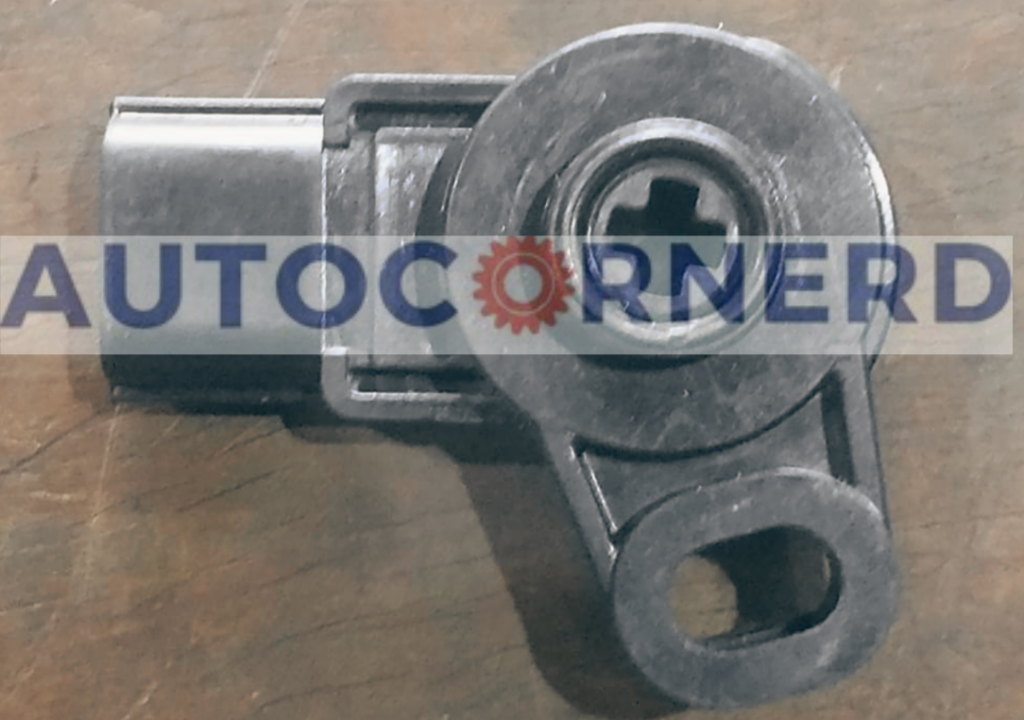
Throttle position sensors monitor how far the throttle body is opened and send signals from the throttle body to the ECU. You will find these sensors on the throttle body.
If the ECU does not find a correlation between the readings sent by the throttle position sensor and the mass airflow sensor, it will put your engine in reduced power mode.
A vehicle might have two throttle position sensors. One reads from low (less than 0.9V) to high voltage (around 5V) and the other from high to low voltage as you press the accelerator pedal.
You can watch below YouTube video to check throttle position sensors using a voltmeter.
4. Check Accelerator Pedal Sensors

The gas pedal in your car is like a switch that tells the engine how fast to go. Under the floor mat, you’ll find little sensors near the pedal that detect how far down you push it.
These accelerator pedal position sensors send signals to the car’s computer, letting it know you want to speed up or slow down. The computer then decides how much to open the throttle valve – the gateway to the engine that controls your speed.
Most cars today use electronic throttle control with these smart sensors for smoother, more precise acceleration. Your ride likely has two or three of them working together to track your foot on the gas. They change voltage the same way a throttle position sensor does, giving the computer a constant speedometer reading from your pedal.
If these accelerator sensors start glitching, your engine power can get thrown off. Faulty signals will confuse the computer, making the throttle valve react unpredictably. The solution is to replace the flaky sensors. This restores the proper connection from pedal to engine, so you can drive without frustrating slowdowns or surges.
5. Checking or Replacing Engine Air Filter
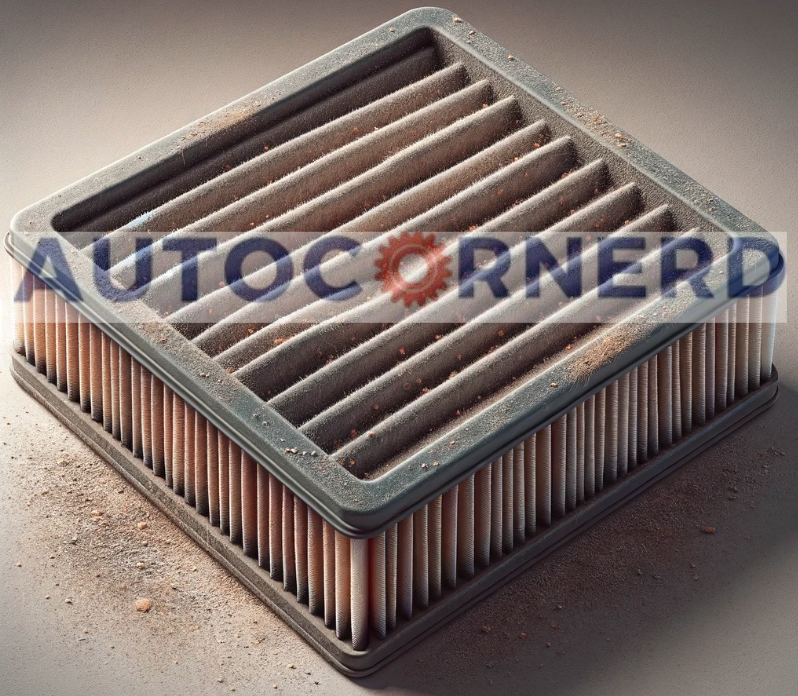
Air filters remove small particles from the air and prevent them from entering the engine. However, they can clog up over time, causing a reduction in airflow.
This will reduce the amount of oxygen flowing into the engine, leading to a drop in power.
A good air filter will clean out dust particles, pollen, hair, and other debris from the air. You can find an air filter in the air box that is present in the engine bay. You should always replace the engine air filter after every 15,000 if you have been using an OEM filter.
Furthermore, as a precaution, blow compressed air through the engine air filter after every 500 miles.
6. Clean or Replace Mass Airflow Sensor
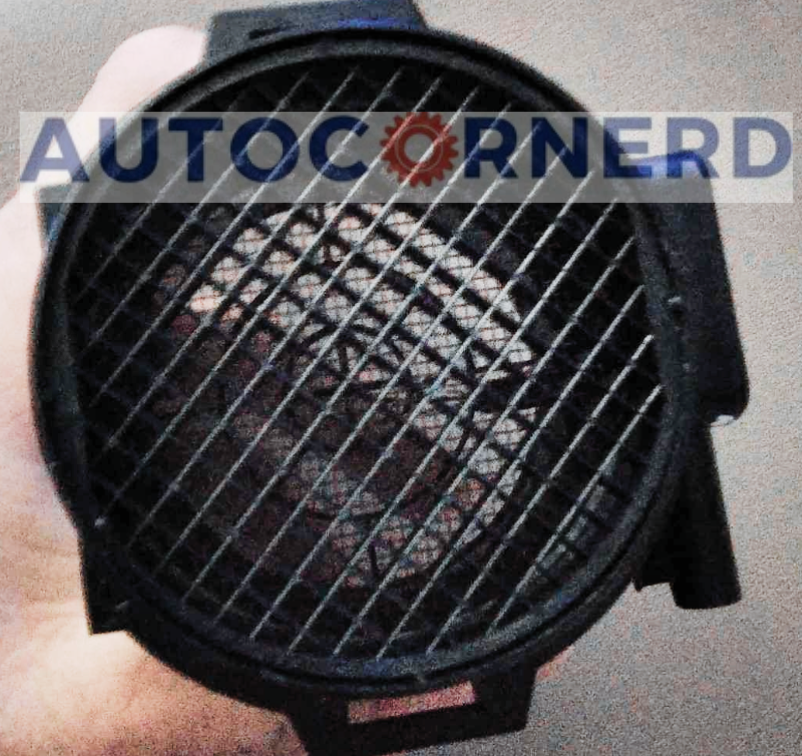
Malfunctioning of Mass Airflow Sensor (MAF) can cause a reduction in the amount of air flowing through the engine. The airflow sensor sends a signal to the ECU (Electronic Control Unit) which then adjusts the fuel-air mixture to match the requested RPM.
If the sensor malfunctions, the engine may be running leaner than normal. As a result, the engine may not be producing enough power and the car may not accelerate.
How to test?
As the mass flow rate of air through the MAF sensor increases, voltage output also increases.
When you push the gas pedal, more air goes through the MAF sensor. This makes the voltage go up. When the car is not moving much, the voltage should be less than 1.0V. When you make the car go faster, the voltage from the MAF sensor goes up from 1.0V to 1.7V.
How to clean them?
To clean the MAF sensor, follow these steps:
- Disconnect the negative terminal of the battery.
Remove the MAF sensor, it is located on the intake tube between the air filter box and the throttle body facing upwards. - Spray all of the little sensors you see inside of the MAF carefully with this MAF sensor cleaner.
Reinstall and reconnect the battery terminal. - Start the engine and let the ECU relearn idle for 15 minutes.
You can check out the below video to test the mass airflow sensor:
7. Check Transmission Fluid and Components of Transmission System
If you have an automatic transmission system, you should check if there is a low transmission fluid level to bypass reduced engine power.
In an automatic transmission, the transmission oil is used to operate the torque converter and engage and disengage various clutches and bands to engage gears.
If the transmission fluid level is low or dirty, the ECU will put your vehicle in a reduced power mode to prevent further to the transmission system.
Other components of transmission system that you should check include:
- Transmission speed sensor
- Torque converter
- Oil gear pump
- Valve body
- Clutches and drums
- Transmission solenoid valves
To learn more, you can read my guide on causes of Car not moving in any gear in automatic transmission.
8. Low Oil Pressure
A car’s engine relies on oil pressure to keep running smoothly. Think of oil pressure like the heartbeat pumping strength through your engine’s veins. When pressure runs low, problems surge.
Like a fuel gauge for engine power, the oil pressure sensor tracks force levels. Too little oil pressure oomph triggers warning lights on the dashboard. The engine computer (ECU) reacts by reducing fuel to the engine, preventing full throttle. This “reduced power mode” allows limping home for repairs.
Ideal oil pressure varies by engine design. But dangers lurk if pressure drops significantly below norms. My guides on low pressure at idle and SAE 30 versus 10W-30 oils provide details on recommended levels and troubleshooting causes.
Before tearing into the engine, first check the oil pressure sending unit. Flaky sensors often mimic pressure drops. Replacing a faulty unit is an easy fix.
Next, inspect oil quality. Clean oil maintains viscosity and flow at higher pressures. My comparison of Pennzoil Platinum versus Castrol Edge explains motor oil grades. Quality oil prevents premature wear, so don’t skimp.
9. Check Traction Control/Stabilitrak System
When the “Service Traction Control” and “Service Stabilitrak” warnings show up with “Reduced Power Mode” on the dashboard, it means the vehicle’s stability system has detected an issue.
Traction control uses sensors on the wheels along with the anti-lock braking system to keep the car stable if it starts to spin out. Stabilitrak takes it further by managing oversteer and understeer as well. If there’s a problem, the car computer limits engine power to protect the vehicle.
In my guide on what does TC mean in a car, I have explained the working of the traction control system and how it differs from Stabilitrak/Stability system.
To get back to full power, inspect these key parts of the stability system:
- Tire pressure sensors – confirm all tires are inflated properly
- Steering angle sensor – ensures proper response while turning
- Wheel speed sensors – monitor rotation of each wheel
- Brake fluid – must be at proper level for ABS to work right
- Yaw/lateral acceleration sensors – detect sideways sliding and rollover risk
- Anti-lock braking system – integral part of traction/stability control
If your vehicle dashboard is displaying a Service Traction Control/Service Stabilitrak message along with the Reduced Power Mode message, it means that you have to inspect your vehicle’s stability system to bypass reduced engine power.
10. Check Catalytic Converter

The catalytic converter is your vehicle’s best defense against air pollution. This handy device transforms the dirty exhaust from your engine into cleaner fumes, helping keep the air we breathe a little fresher.
The magic happens on the inside, where a coated honeycomb structure houses special catalyst materials. As exhaust gases pass through, chemical reactions transform nasty carbon monoxide and nitrogen oxides into more harmless carbon dioxide, water vapor, and nitrogen. Those hydrocarbons also get broken down before they ever leave the tailpipe.
But the converter can’t work its magic if contaminated by gunk. Buildups of soot, oil, gas, and water act like a barrier, blocking exhaust from contacting the catalyst. Without access, oxygen molecules get trapped, engine power drops, and you might feel some odd vibrations.
How to test?
If your scan tool is showing any OBD2 code related to bad emissions or catalytic system efficiency, you should immediately check the catalytic converter. This guide on testing a clogged catalytic converter is also quite helpful. You should check that out.
A clogged catalytic converter also causes the engine to overheat. In that case, you can bypass reduced engine power by replacing a catalytic converter.
Also Read: CAT Delete Pros and Cons
11. Check Spark Plugs
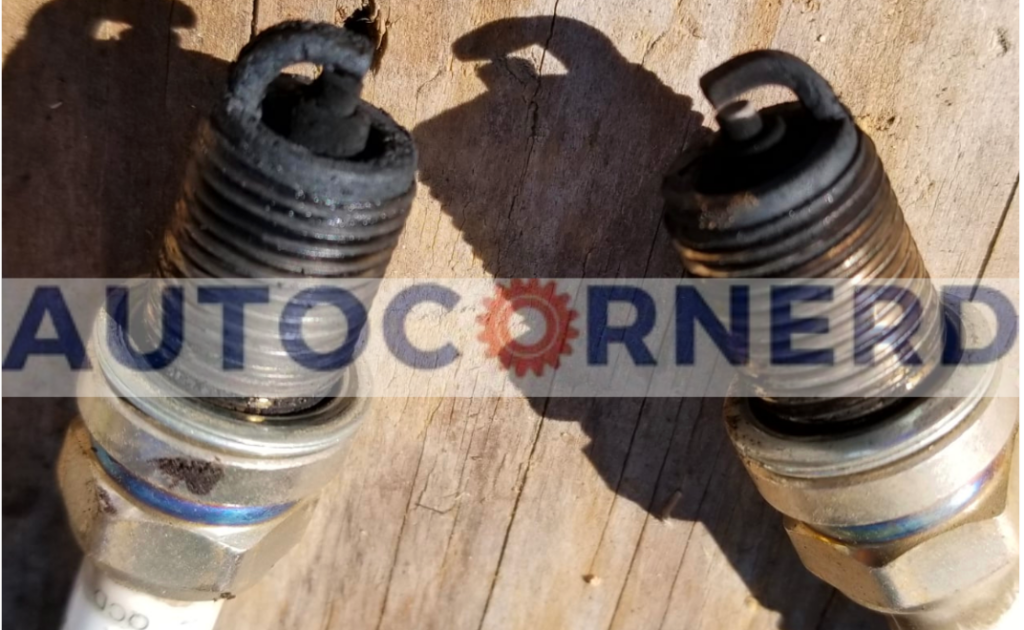
Spark plugs can cause reduced engine power due to engine misfire. The spark plug is located in the cylinder head of the engine. It is connected to the distributor via the ignition coil or have an ignition coil directly secured on it.
With time, the spark plug is fouled with carbon deposits, oil film, ash deposits, and corrosion. When a spark plug fouls, it can’t generate a strong enough spark for efficient combustion, resulting in reduced engine power. This guide (PDF) is good for identifying bad spark plugs.
How to fix?
Deciding whether to clean or replace spark plugs relies on their condition. If the spark plugs are old or damaged, they need to be swapped out.
If they still look good, you can clean them and fix the gap between their tips. This gap adjustment is based on what the manufacturer suggests.
The process of cleaning spark plugs depends on how they are fouled. First, blow away dirt and junk using compressed air. After that, soak the spark plug in brake cleaner until all the gunk is gone. You can also use a soft brush to get rid of any remaining debris.
12. Check Coolant System
Any damage to the coolant system can also put the engine into reduced power mode to prevent engine damage.
The cooling system consists of a radiator, a thermostat, an engine coolant temperature sensor, a water pump, a heater core, and hoses connecting all these parts. A coolant leak may cause overheating of the engine.
So, if you accelerate the vehicle, more fuel combustion will take place and more heat will produce.
To prevent this, the ECU puts the vehicle in a reduced engine power mode so that engine temperature can’t be increased above a certain limit. You can read my guide on P0128 code to learn the coolant system in the engine.
Some First Hand Experiences Shared By Users In Different Communities
Our team conducted research across various online communities, forums, and subreddits to gather user comments and opinions on “How to bypass reduced engine power”.
User 1 says:
Had this ‘reduced engine power’ warning pop up on my Accord. Super annoying! I first checked the throttle body and cleaned it, but no luck. Then, I replaced the throttle position sensor, and voilà, it was like magic. Runs smooth now.
User 2 says:
My Sonata had this issue last week. I checked the engine codes, and it pointed to the EGR valve. Cleaned the EGR valve myself, and it resolved the problem. A bit of elbow grease saved me a trip to the mechanic.
User 3 says:
I’ve got a Malibu and faced this issue last month. Did a bit of research and found out it could be the Mass Air Flow (MAF) sensor. Cleaned the MAF sensor thoroughly, and it actually worked! The car’s performance improved right away.
User 4 says:
Encountered this reduced engine power message in my Camry. Took it to my brother, who’s a mechanic. He checked the O2 sensor and the catalytic converter. Turned out, the O2 sensor was faulty. Replaced it, and the car’s been running perfectly since.
User 5 says:
Faced this in my Jetta. Initially thought it was a major issue. Checked forums and learned it could be a software glitch. Took it to the dealer for a software update, and surprisingly, that did the trick!
Final Thoughts
When the reduced engine power warning illuminates your dash, it signifies an issue detected by the computer controlling your engine performance. Essentially, the engine is unable to produce its normal level of power due to a problem picked up by one of the sensors.
Since the computer monitors and adjusts performance, it is able to warn you when things go awry. To resolve reduced power and get back to full throttle, start by scanning for any diagnostic trouble codes to pinpoint potential causes. Fix whatever component is causing the problem, whether a faulty sensor or other fault.
Finally, be sure to clear all codes and reset the engine computer when repairs are complete. This allows the computer to relearn optimal performance parameters and releases your engine from its power-limiting chains. With diligent diagnosis and repair, you can silence that warning glow for good.
How Did You Fix Reduced Engine Power Of Your Car? Please vote.
[yop_poll id=”14″]
